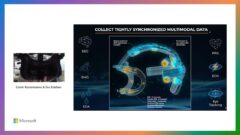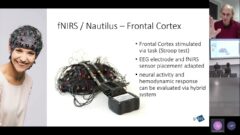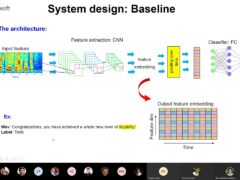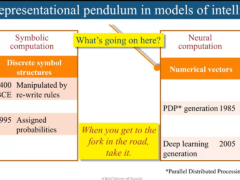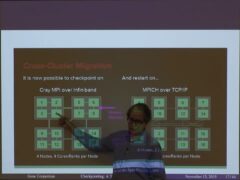A Real-time Augmented Reality Processor and a Smart Glasses System
Real-time augmented reality (AR) is actively studied for the future user interface and experience (UI/UX) in smart glasses platforms. However, due to the small battery size and limited computing power of the current smart glasses, it has failed to implement the real-time markerless AR in the glasses-type form-factor. In the presentation, I propose a real-time and low-power AR processor for advanced and recognition-based AR applications. For the high throughput, the processor adopts task-level pipelined SIMD-PE clusters and a congestion-aware network-on-chip (NoC). Both of these two features exploit the high data-level parallelism (DLP) and task-level parallelism (TLP) with the pipelined multicore architecture. For the low power consumption, it employs a vocabulary forest accelerator and visual attention algorithm reduces overall workload by removing background clutters from the input video frames to reduce unnecessary external memory accesses and core activation. The proposed processor is successfully demonstrated in a battery-powered head mounted display platform, performing the full-chain of AR operation in real-time.
Speaker Details
Gyeonghoon Kim received the B.S. and M.S. degrees from the Korea Advanced Institute of Science and Technology (KAIST), Daejeon, Korea in 2009 and 2011, respectively, where he is currently pursuing the Ph.D. degree in electrical engineering. His current research interests include low-power digital processors with dynamic resource management for computer vision and Network-on-Chip (NoC) based SoC design.
- Series:
- Microsoft Research Talks
- Date:
- Speakers:
- Gyeonghoon Kim
- Affiliation:
- Korea Advanced Institute of Science and Technology (KAIST)
-
-
Jeff Running
-
Series: Microsoft Research Talks
-
-
-
-
Galea: The Bridge Between Mixed Reality and Neurotechnology
Speakers:- Eva Esteban,
- Conor Russomanno
-
Current and Future Application of BCIs
Speakers:- Christoph Guger
-
Challenges in Evolving a Successful Database Product (SQL Server) to a Cloud Service (SQL Azure)
Speakers:- Hanuma Kodavalla,
- Phil Bernstein
-
Improving text prediction accuracy using neurophysiology
Speakers:- Sophia Mehdizadeh
-
-
DIABLo: a Deep Individual-Agnostic Binaural Localizer
Speakers:- Shoken Kaneko
-
-
Recent Efforts Towards Efficient And Scalable Neural Waveform Coding
Speakers:- Kai Zhen
-
-
Audio-based Toxic Language Detection
Speakers:- Midia Yousefi
-
-
From SqueezeNet to SqueezeBERT: Developing Efficient Deep Neural Networks
Speakers:- Sujeeth Bharadwaj
-
Hope Speech and Help Speech: Surfacing Positivity Amidst Hate
Speakers:- Monojit Choudhury
-
-
-
-
-
'F' to 'A' on the N.Y. Regents Science Exams: An Overview of the Aristo Project
Speakers:- Peter Clark
-
Checkpointing the Un-checkpointable: the Split-Process Approach for MPI and Formal Verification
Speakers:- Gene Cooperman
-
Learning Structured Models for Safe Robot Control
Speakers:- Ashish Kapoor
-
-




